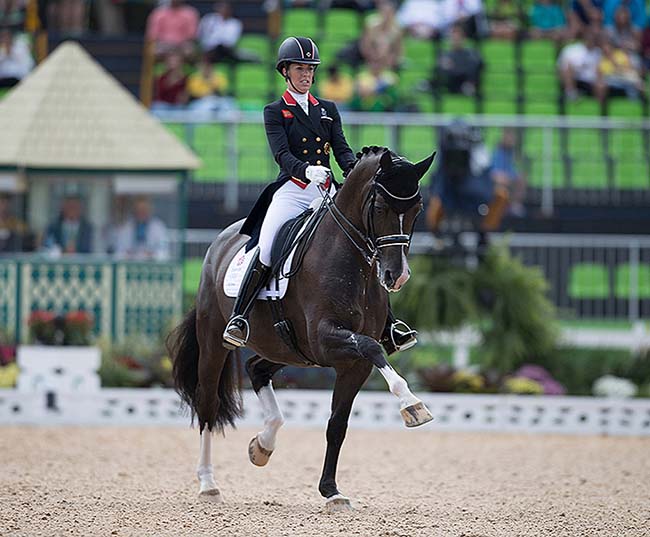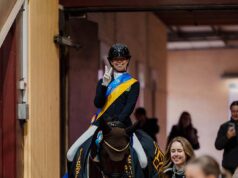
By Celia Clarke
Photography: Arnd Bronkhorst/FEI Dirk Caremans/FEI
Part I of this three-part series was an historical review of the development of Warmblood breeding up to the begining of World War II, setting it firmly in the context of wider political, economic, and cultural events. Part II part takes us up to the present day and follows the same approach by linking developments in the Warmblood and sport horse breeding industry with the national and international pressures that have affected it.
Part III will endeavor to address the problems, risks and potential positives facing the industry in a post-COVID world and beyond.
To many people it will seem surprising that horse breeding of any kind was able to resume its pre-war pattern relatively quickly after the cessation of hostilities. In fact, of course, in many countries – even those either actively at war or occupied by foreign forces – it had never actually ceased. The reasons for this were two-fold.
Firstly – and this is a fact often overlooked by even specialist military historians – in the European theatre of action (and particularly in Germany) Second World War armies were still surprisingly reliant on horse power, with amazingly the largest ever single purchase of horses in history being by the Wehrmacht in 1944, probably because the horse-drawn drays followed immediately behind the Panzers when in action.
Secondly, and more commonly recognized, is the fact that at this time agriculture was not really even beginning to be mechanized (apart from in the wide-open spaces of the prairie and farming states of the relatively wealthy United States) so horses were still the main providers of power to all sectors of the agricultural industry. This was as true in the UK and Ireland as it was in mainland Europe, as even after the generous input of funds via the Marshall Plan, petrol (gasoline) was still in desperately short supply and the need for calm, adaptable horses to pull the plough and take the family and their goods to market was as strong – possibly even stronger – than it had been pre-War.
In this situation those countries with a national framework of locally based (but centrally government-funded) studs – the old adversaries France and Germany, and the neutral Sweden, for example – were those most able to address the need for suitable breeding programmes quickly. Even so, many of the clean-legged but rather substantial mares that, covered by local stallions, were to produce the geldings set to work on the farms, were eventually to become the ‘foundation’ mares of a high percentage of the currently most successful Warmblood and sport horse studbooks.
Alongside this, in the UK and Ireland these mares were usually crossed with Thoroughbred sires (such as the Premium Stallions selected by the Hunter’s Improvement Society in England, Scotland, and Wales) rather than true cold-blood ‘heavy horse’ stallions, to produce a more all-round horse suitable for the growing demand for hunters and show horses. These horses were, therefore, really a by-product of the still flourishing racehorse breeding industries in both these countries – and the French Thoroughbred and Trotter breeding industries also helped to develop the ‘half-bred’ horse that was to become popular as a source of leisure riding in the latter part of the 1950s.
To the East, chiefly in Poland and the USSR and its satellite countries, state studs (particularly those on the Hungarian plains and surrounding areas) were again the main sources of horses for all purposes, including carriage driving, although in this case the mares were usually owned by the state rather than by individual farmers as was more often the situation across Western Europe. Sadly access to the huge gene pool to the East of Germany – which had been a regular source of improving/lightening bloodlines in the past (most of them Trakehner or Trakehner crosses) -- was lost when the Iron Curtain came down, and after the Berlin Blockade in 1948 it would be 40 years before they could be easily accessed again.

To complete the picture, the Anglophone countries outside Europe (the USA, Australia, and New Zealand) concentrated their non-agricultural horse breeding industries mainly on Thoroughbreds (for racing) and TB crosses for non-racing markets, although the flourishing Western riding scene (not an Olympic sport, so outside the remit of World Breeding News) was also a very major source of income for American horse breeders. Finally, the Iberian breeds and their related studbooks (Lusitano, Andalusian and Lipizzaner) still reflected the concentration on classical dressage – and some carriage driving – that was the cultural heritage of those countries, as much then as they still are today.
Of course, some of the horses bred as army remounts prior to and during the Second World War (both in mainland Europe and in the UK and Ireland) did survive the conflagration and -- as many of them had been bred to be able to adapt to the somewhat variable riding skills of army officers – they proved to be ideally suited to meeting the needs of the growing leisure market that developed in the 1950s.
Again, within the UK and Ireland, a considerable number of them were ‘half-breds’ by TB stallions of good temperament and proven soundness and out of more substantial mares. As such, they were also adept at coping with increasing demands for both cross-country agility and speed and the more controlled demands of local showjumping competitions. Dressage, on the other hand, rarely featured as a significant competitive discipline in any of the Anglophone countries so the type of action required of horses bred in this way tended to rely on fast low canters rather than the more rounded paces of their Continental compatriots... To read the complete article you need to be a subscriber
CLICK HERE TO SUBSCRIBE TO BREEDING NEWS
SUBSCRIBERS CAN READ THE COMPLETE ARTICLE BY LOGGING IN AND RETURNING TO THIS PAGE



